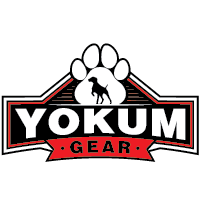Proper dental care is essential for your dog’s overall health and well-being. Just like humans, dogs can suffer from plaque buildup, gum disease, and other oral health issues if their teeth are not regularly cleaned. One of the most important steps in maintaining your dog’s dental care routine is choosing the right toothbrush. This article will guide you through the essential considerations to help you choose the best toothbrush for your dog.
Types of Dog Toothbrushes
There are several types of toothbrushes designed specifically for dogs. Here are the main categories:
Double-Ended Toothbrush
This type of toothbrush usually has two heads – a larger one for the back teeth and a smaller one for the front teeth. The double-ended design allows you to effectively clean all dental surfaces with one tool.
Finger Toothbrush
Finger toothbrushes are small brushes that fit over your fingertip, allowing you to be more tactile and precise when cleaning your dog’s teeth. They can be especially useful for smaller dogs or for dogs that are new to brushing.
Electric Toothbrush
Electric toothbrushes for dogs are similar to those for humans but are specifically designed for canine mouths. They provide thorough cleaning through oscillating or vibrating motions, although some dogs may need time to get used to the noise and sensation.
Factors to Consider
When selecting a toothbrush for your dog, keep the following factors in mind:
Size and Shape
Ensure the toothbrush is appropriately sized for your dog’s mouth. Smaller dogs will require smaller brushes, while larger dogs can handle bigger brushes. Additionally, look for the shape that can reach all areas of your dog’s mouth easily.
Bristle Type
Soft bristles are generally preferred for dog toothbrushes, as they are gentle on the gums and effective at cleaning without causing discomfort. Avoid hard bristles, which can damage your dog’s gum tissue.
Comfort and Ease of Use
The toothbrush should be comfortable for both you and your dog. Check the handle design and ensure it provides a good grip, as brushing an uncooperative dog can be challenging. Additionally, choose a design that allows for ease of maneuvering in your dog’s mouth.
Durability
Look for a toothbrush made of durable materials that can withstand regular use. Regular cleaning and the ability to replace brush heads can enhance the lifespan of the toothbrush.
Getting Your Dog Acclimated
Introduce your dog to brushing gradually. Start by letting them sniff and lick the toothbrush and get used to the sensation. Use dog-friendly toothpaste to make the experience more enjoyable, as human toothpaste can be harmful to dogs.
Begin brushing gently, focusing on areas that are easy to reach. Gradually increase the duration and comprehensiveness of each brushing session as your dog becomes more comfortable. Positive reinforcement, with treats and praise, can make the process more enjoyable for your dog.
Conclusion
Choosing the best toothbrush for your dog involves considering size, bristle type, ease of use, and durability. With the correct toothbrush and a little patience, you can ensure your dog enjoys a healthier mouth and a happier life. Prioritize regular dental care to prevent serious health issues and maintain your pet’s overall well-being.

